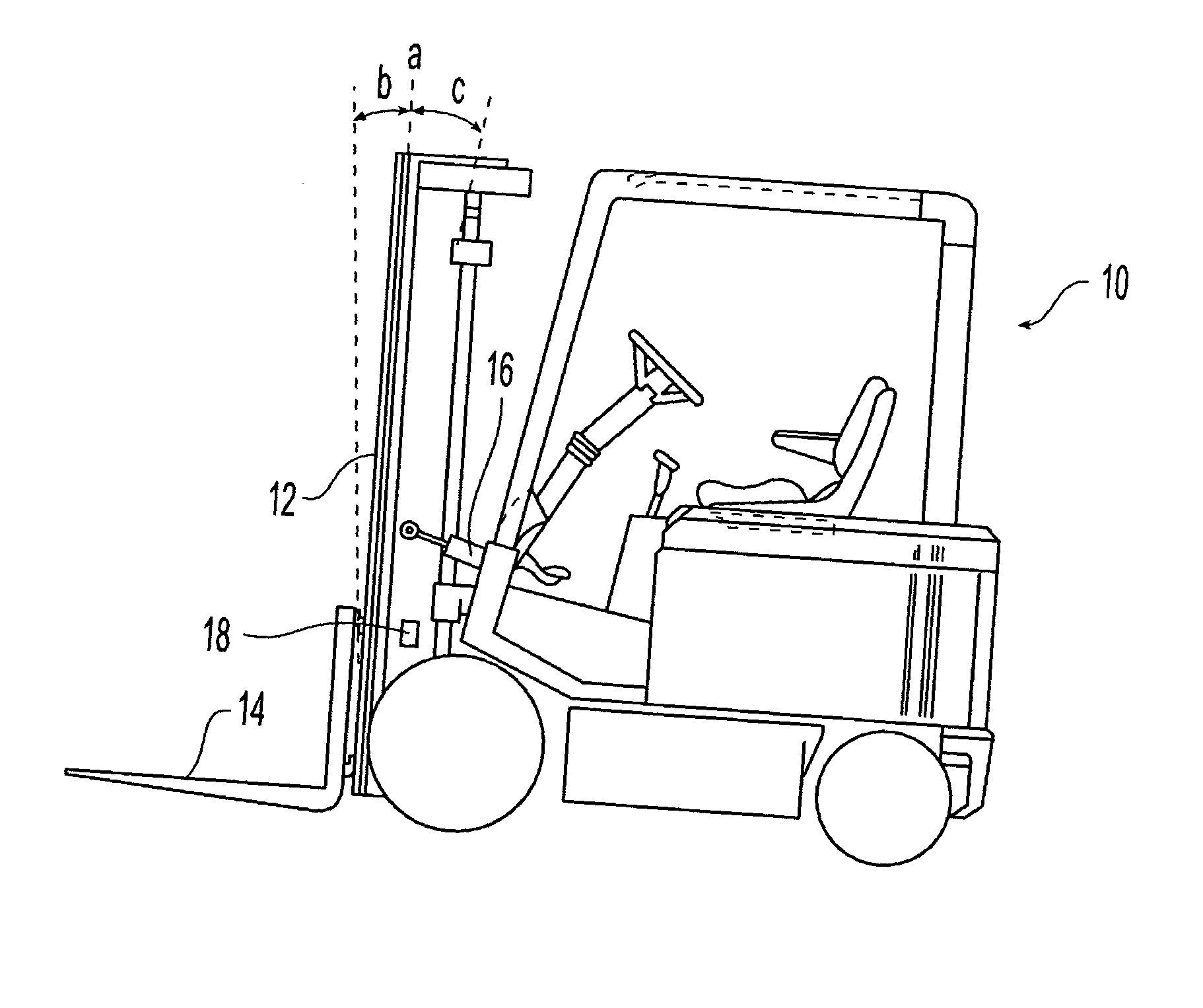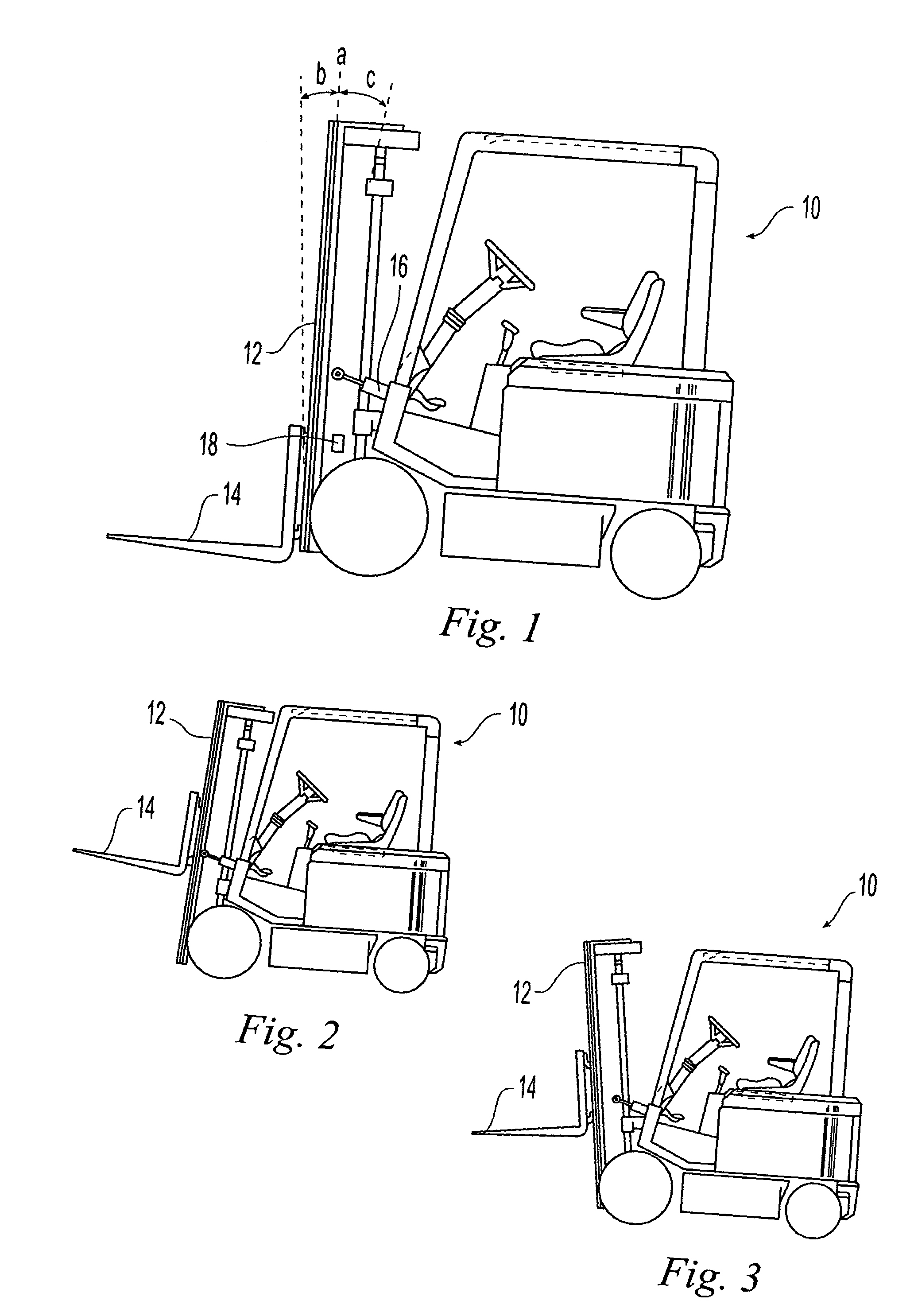Lift truck active load stabilizer
- Summary
- Abstract
- Description
- Claims
- Application Information
AI Technical Summary
Benefits of technology
Problems solved by technology
Method used
Image
Examples
Embodiment Construction
[0023]FIG. 1 illustrates a lift truck 10 having a lift mast 12 to which a cargo support platform, in the form of a conventional fork 14, is mounted. The lift truck 10 is provided with the conventional equipment for raising and lowering the fork 12 along the lift mast. It is also provided with a conventional hydraulic cylinder actuator 16 for tilting the mast fore and aft from its angular orientation a, in which the fork 12 is horizontal when the lift truck is on a horizontal surface, through a forward tilt angle b or a rearward tilt angle c. Preferably the actuator 16, which can be any of several prior art actuators, is connected to a control system which includes the prior art feature that it can be manually tilted by the lift truck operator when desired.
[0024] An acceleration sensor 18 is mounted to the lift truck, preferably to the lift mast 12. The purpose of the acceleration sensor 18 is to sense the direction of the resultant acceleration vector on the cargo. The sensed accel...
PUM
 Login to View More
Login to View More Abstract
Description
Claims
Application Information
 Login to View More
Login to View More - Generate Ideas
- Intellectual Property
- Life Sciences
- Materials
- Tech Scout
- Unparalleled Data Quality
- Higher Quality Content
- 60% Fewer Hallucinations
Browse by: Latest US Patents, China's latest patents, Technical Efficacy Thesaurus, Application Domain, Technology Topic, Popular Technical Reports.
© 2025 PatSnap. All rights reserved.Legal|Privacy policy|Modern Slavery Act Transparency Statement|Sitemap|About US| Contact US: help@patsnap.com



